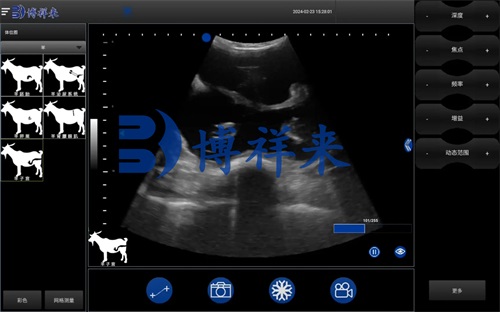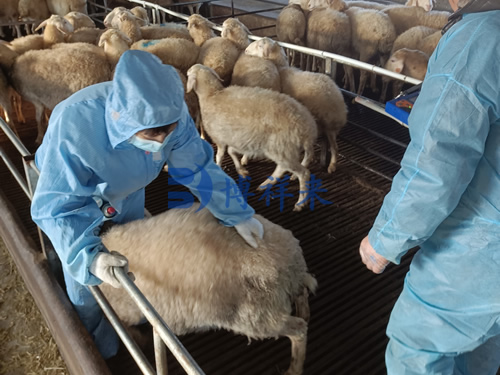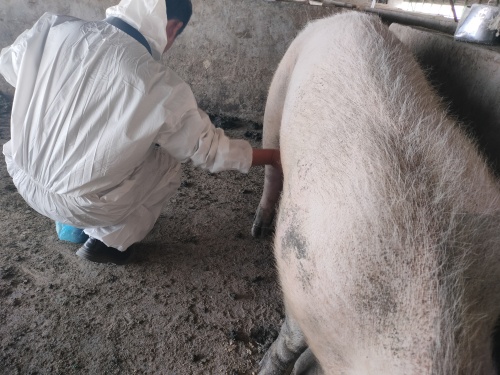Ultrasound Pregnancy Tools Assisting Seasonal Breeding Synchronization in Sheep
As a sheep farmer, optimizing breeding efficiency during the narrow seasonal window is crucial to maintain profitability and herd stability. Unlike some other livestock species, sheep are highly influenced by seasonal breeding patterns, with natural estrous cycles linked to photoperiod changes. However, modern reproductive management strategies—especially the integration of ultrasound pregnancy tools—have revolutionized how farmers worldwide synchronize breeding and maximize lambing success. In this article, I’ll explore how we apply ultrasound technology to assist seasonal breeding synchronization in sheep, why it has become indispensable in global sheep farming, and how it directly improves productivity.

Understanding Seasonal Breeding in Sheep
Sheep are categorized as short-day seasonal breeders, meaning their natural reproductive cycle is stimulated as day length shortens, typically in the autumn. This biological rhythm ensures that lambs are born during spring, when environmental conditions and pasture availability are optimal for raising young.
However, this natural breeding window can be limiting, especially for commercial operations seeking to expand flock size, produce multiple lambing crops per year, or supply consistent market demand. As international sheep producers have long recognized, manipulating estrous cycles through synchronization protocols has become a common practice to extend or concentrate breeding seasons.
Synchronization involves the controlled induction of estrus (heat) across groups of ewes simultaneously, using hormonal treatments such as progesterone-releasing devices, prostaglandins, and gonadotropins. While these protocols are highly effective, they require accurate follow-up to confirm pregnancy and optimize management. This is where ultrasound pregnancy tools offer invaluable support.
The Role of Ultrasound in Synchronization Programs
Ultrasound technology—especially real-time B-mode ultrasonography—provides farmers with an immediate, non-invasive, and highly accurate method of confirming pregnancy. For synchronization programs, this precision allows producers to:
-
Identify successfully bred ewes early
-
Detect open (non-pregnant) ewes for re-synchronization or culling
-
Monitor fetal development throughout gestation
-
Improve overall reproductive efficiency
Unlike waiting for physical signs of pregnancy or relying on delayed outcomes, ultrasound offers real-time information that empowers rapid decision-making. As many global sheep farmers attest, it transforms how we manage synchronized breeding programs.

How Ultrasound Pregnancy Tools Work in Sheep
Veterinary B-mode ultrasound uses high-frequency sound waves to create real-time images of internal organs and developing fetuses. In sheep pregnancy diagnosis, transabdominal ultrasound is the most commonly used approach after synchronization breeding.
Timing of Ultrasound Examinations
-
Early Diagnosis (25-35 days post-breeding): Skilled ultrasound operators can detect pregnancy as early as 25 days post-insemination, observing fluid-filled uterine structures and early embryonic vesicles.
-
Mid-Gestation (40-90 days): Fetal heartbeats, limb movements, and head and body structures are clearly visualized, allowing for counting multiple fetuses.
-
Late Gestation (after 100 days): Later scans may be used to assess fetal development or identify complications, although most pregnancy confirmation occurs earlier.
By conducting ultrasounds during early to mid-gestation, producers can segregate pregnant ewes, apply targeted nutritional plans for singles or multiples, and plan lambing schedules with precision.
Equipment Requirements
Modern veterinary ultrasound machines designed for sheep, such as portable models with waterproof casings, long battery life, and high-resolution imaging, have made on-farm scanning far more accessible. Handheld devices with linear or convex transducers are preferred for transabdominal scanning, offering clear fetal images even in field conditions.
In advanced global markets, machines like the BXL-V50 Veterinary Ultrasound Scanner are widely used for their durability, ease of use, and superior imaging capabilities tailored for small ruminants.

The Global Adoption of Ultrasound in Sheep Breeding
Across the world, sheep-producing nations—Australia, New Zealand, the UK, Spain, and parts of the United States—have embraced ultrasound as a cornerstone of reproductive management. The reasons for its widespread adoption are clear:
1. Maximizing Synchronization Success
In synchronization programs, not every ewe will conceive after initial breeding. Ultrasound allows rapid identification of open ewes, which can then be quickly re-inseminated during a subsequent synchronization cycle. This reduces empty days, improves lambing percentages, and ensures better use of valuable breeding stock.
2. Managing Multiple Births
Fertility treatments often increase the likelihood of twins or triplets. Early ultrasound scanning identifies the number of fetuses, enabling farmers to adjust nutrition, monitor high-risk pregnancies, and prevent lambing difficulties.
As Dr. John Southworth, a reproductive veterinarian in Australia, notes:
“Ultrasound scanning after synchronization not only confirms pregnancy but allows us to tailor feeding and management specifically for twin- or triplet-bearing ewes. This directly reduces lamb mortality and improves weaning weights.”
3. Labor and Resource Efficiency
Manual pregnancy detection through observation is labor-intensive, subjective, and often inaccurate in early gestation. Ultrasound provides objective data, enabling efficient flock management and labor allocation.
4. Improved Animal Welfare
By identifying non-pregnant ewes early, farmers can avoid unnecessary feed costs or medical treatments for animals not contributing to production. This improves overall welfare and allows resources to focus on productive stock.

Integration with Other Reproductive Technologies
Ultrasound pregnancy diagnosis complements other reproductive tools used globally to support seasonal breeding synchronization:
-
Artificial Insemination (AI): Ultrasound verifies AI success rates and guides adjustments for future breeding rounds.
-
Embryo Transfer Programs: Post-transfer pregnancy confirmation ensures embryo survival and optimizes donor-recipient matching.
-
Nutritional Management: Precise fetal counts enable targeted energy and protein supplementation based on litter size.
This integration represents the most advanced level of reproductive management now routinely practiced in commercial sheep operations worldwide.
Challenges and Considerations in Ultrasound Use
Despite its many advantages, ultrasound-assisted synchronization is not without challenges. Several factors must be addressed for successful implementation:
Operator Skill
High-quality ultrasound images require skilled operators familiar with sheep anatomy and fetal development stages. Internationally, many producers attend specialized training programs or hire professional scanning services to ensure accuracy.
Equipment Investment
Although portable ultrasound units have become more affordable, initial equipment costs may be prohibitive for small-scale producers. However, cooperative ownership models or contracted scanning services help spread these costs.
False Negatives or Positives
Improper scanning techniques, inexperienced operators, or scanning too early can occasionally lead to misdiagnosis. Protocol adherence and operator training minimize such risks.
The Economic Impact of Ultrasound-Assisted Synchronization
Numerous studies across sheep-producing countries highlight the economic advantages of ultrasound in synchronized breeding programs. According to research from the University of New England in Australia (2022), flocks utilizing ultrasound pregnancy diagnosis after synchronization achieved:
-
15-20% higher lambing rates due to improved re-breeding of open ewes
-
10-12% reduction in lamb mortality through targeted multiple birth management
-
Significant savings in feed costs by removing open ewes from gestation-specific rations
These benefits translate into thousands of dollars in added revenue for medium to large commercial flocks.
Similarly, data from Spanish sheep farms presented in Veterinary Reproduction Journal (2023) demonstrated that ultrasound-guided pregnancy diagnosis after synchronization protocols reduced overall flock reproductive failure rates by over 18%, directly improving farm profitability.
Case Study: Synchronization Success in New Zealand
New Zealand’s sheep industry offers a compelling case study of ultrasound-supported synchronization. Facing increasing market demand for consistent lamb supply year-round, many Kiwi sheep farms have adopted intensive reproductive management.
Using progesterone-based CIDR devices followed by prostaglandin injections, synchronization protocols align ewes into tight breeding windows. Ultrasound scans at 30-40 days post-insemination identify pregnant ewes, allowing non-pregnant animals to rejoin subsequent cycles.
Veterinarian Dr. Fiona MacDonald explains:
“Without ultrasound, we’d have to wait months to find out which ewes didn’t conceive. With scanning, we can react quickly, keep lambing percentages high, and fine-tune our feeding for twin- and triplet-bearing ewes. It’s transformed our seasonal management.”
The Future of Ultrasound in Sheep Synchronization
Technological advances continue to enhance ultrasound’s role in sheep reproduction:
-
AI-Powered Image Analysis: Emerging software can assist in real-time fetal counting and gestational age estimation, reducing operator subjectivity.
-
Portable Wireless Units: New lightweight, wireless probes paired with mobile devices increase flexibility and field usability.
-
3D Ultrasound Imaging: Though still largely in research phases, 3D fetal imaging could provide even more precise data for complex multiple pregnancies.
As global demand for efficient livestock production grows, ultrasound pregnancy tools will remain central to high-performance reproductive management in sheep farming.
Conclusion
For modern sheep producers worldwide, managing seasonal breeding synchronization requires precision, flexibility, and accurate monitoring tools. Ultrasound pregnancy devices have become essential in this process, offering real-time confirmation of breeding success, supporting efficient flock management, and driving profitability.
By combining synchronization protocols with early, non-invasive pregnancy diagnosis through ultrasound, farmers can maximize lambing percentages, better allocate resources, improve animal welfare, and ultimately meet the growing demands of global meat and wool markets. As technology evolves, the role of ultrasound in reproductive management will only expand, offering even greater value to sheep producers everywhere.
Reference Sources:
-
Southworth, J. (2021). Ultrasound Applications in Sheep Reproduction Management. Australian Veterinary Reproduction Association.
-
University of New England. (2022). Economic Analysis of Ultrasound Pregnancy Diagnosis in Sheep Synchronization Programs.
-
Veterinary Reproduction Journal. (2023). Impact of Early Pregnancy Detection on Spanish Sheep Farm Profitability.





